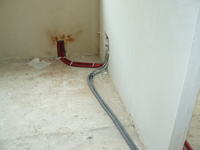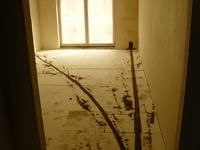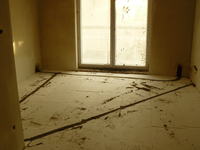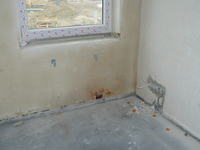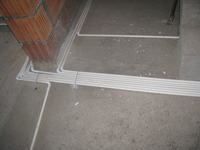retrofood wrote: You clung to this standard and cling to the hem of a mom's skirt. Well, there is no standard that prohibits laying cables in the floor, so get the alternative electrical engineering out of your head.
I do not stick to the standards. And you, my friend, and especially Kkas12, you hold on to her like that. I'm not going to get into verbal quarrels but this is what I conclude from the posts you write. So don't be offended because that's not the point.
retrofood wrote: The condition, however, is to use the brain, because the tables do provide the long-term load capacity of the cables in different ways of laying, but I have not yet seen one that includes five different multi-strand cables in one conduit, in addition surrounded by polystyrene. It is this problem that requires reflection and analysis. What powers will be transmitted through individual wires, maybe wires should be moved away from each other, or we have a chance to dissipate this heat somehow ...
I noticed this 1 post, my friend.
retrofood wrote: And don't bother with cracking the floor. The floor is on polystyrene and the wires are shown under the polystyrene. Why are you flooring for the seventeenth time? Are you gonna spill her? It's not your business! You only have to anticipate all the dangers and risks associated with this way of wiring. Only and so much!
Buddy, calmer, why are you nervous? I understand, I ask those who do it and have experience in it, because I have never done it once. I was just interested in the movie and I thought about the topic for discussion.
So it's best to put a conduit on the ceiling, pour concrete in the shape of a trapezoid and not worry? I am asking about foil issues etc because I am not a builder.
Jack wrote:
Since my colleague called me to the board, I will answer that the standards are for voluntary use - this is the case in the entire European Union, why should it be different in Poland.
Standards are technical knowledge resulting from practice, experience, research and hundreds of hours of work from various European committees.
And why did they not foresee such cable arrangement in their studies?
I knew that the president of PKN probably in 2010 described the applicability of the standards as optional. I thought, however, that as the standard is in the regulation or the Journal of Laws these are mandatory for use. My mistake. I greet my friend kkas12 :D
Jack wrote: An electrician will never know what the user connects to a socket powered by such a circuit, because these are general-purpose sockets and not a circuit dedicated to a specific low-power receiver. There are 10 sockets on the circuit and both RTV receivers and electric heaters can be connected there.
Buddy Jacek, I will not agree with you, because the sockets are usually 99.9% at 16A and such a current should withstand the cable with long use. (contemporary coefficient - 1).
A colleague understands a dedicated circuit by a permanent connection or a socket-plug.
Jack wrote: And alternative electrical engineering is breaking the rules of technical knowledge or transforming it into your own fashion.
I have a strange feeling that it is just getting more comfortable. I have already written about the fact that laying on the wall and on the floor is a big difference in time.
And what if we leave the wires and then builders cover them with polystyrene?
Thank you for participating in the discussion. Greetings.



